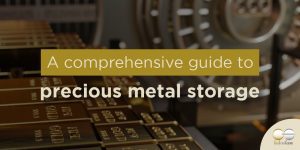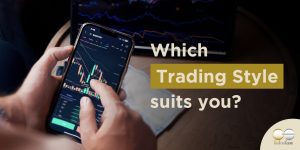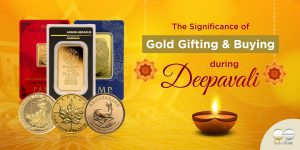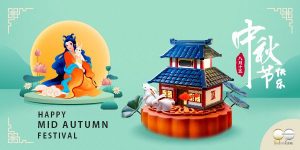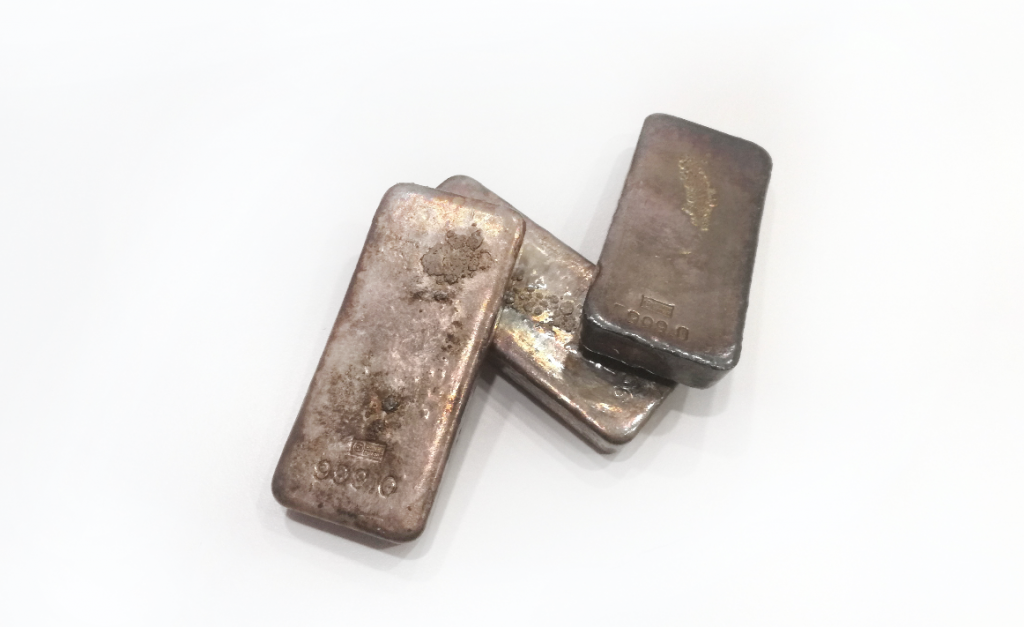Dear Valued Clients,
As announced in Budget 2022 by the Minister of Finance, the GST rate will be increased from 7% to 8% with effect from 1 January 2023 and from 8% to 9% with effect from 1 January 2024.
Starting on 1 January 2024, GoldSilver Central will begin collecting GST at this new rate of 9% on our products (except for those defined under Investment Precious Metals which are GST exempted in the GST Act) and services to clients. Examples of services which will be subject to 9% with effect from 1 Jan 2024 are:
1) Storage charges under GSC Bullion Storage Program
2) Handling and Transfer fees under GSC Bullion Storage Program
3) Storage fees under GSC Savings Accumulation Program (GSAP)
4) Delivery fee for domestic delivery of insured goods to your doorstep
Please note that for purchases of goods and services with us on or after 1 January 2024, GST will be chargeable at 9% unless full payment is received by 31 December 2023.
For more information, please refer to the following Government announcements below:
GST Rate Change (consumer):
GST Rate Change for Consumers (iras.gov.sg)
rate-change-flowchart-for-consumers.pdf (iras.gov.sg)
GST Rate Change (business):
IRAS | Overview of GST Rate Change
etaxguide_2023-gst-rate-change—a-guide-for-gst-registered-businesses_1st-edition.pdf (iras.gov.sg)
Thank you.
If you are reading this article, I believe you are either already investing in precious metals or contemplating doing so. When it comes to investing in precious metals, especially physical bullion, a common question arises: “How should I store it?” and “Where should I store it?” Fear not, in this comprehensive guide, we will explore various aspects of precious metal storage and how to effectively safeguard your wealth.
Types of Precious Metals
Before delving into storage options, it’s essential to understand the types of precious metals in which you can invest. The most common ones include Gold, Silver, and Platinum. Some key considerations to take into account when deciding which types to invest in are your investment goals, risk tolerance, diversification, liquidity, and more. For a more in-depth understanding and to make well-informed decisions regarding precious metals, you can read more about each of them here (Gold, Silver and Platinum).
Storage Options
Let’s take a quick look at some commonly heard storage options for precious metals:
- Home Storage: This is a simpler and cost-effective storage option that offers immediate access. However, it may pose security risks and insurance challenges.
- Bank Safe Deposit Boxes: Bank safe deposit boxes are typically stored in a high-security vault. Access, though, may be limited to banking hours. Safe deposit boxes come in various sizes, but if you have a substantial amount of physical bullion in a large quantity, you may need many boxes, which can be costly.
- Professional Vault: Professional vaulting services offer high-level security, privacy, insurance coverage, and regular audits to ensure the safety of your holdings. However, you need to be aware that professional vault services may not offer immediate access to your items in emergency situations. If you need to retrieve important documents or valuables quickly, you may face delays.
Security Considerations
Regardless of the storage option you choose, security should be your top priority. Ensure that your chosen facility or storage method offers robust security measures, including surveillance, access control measures (biometric authentication, PIN number, smart card, etc.), 24/7 security staff, dual custody, and insurance against theft, damage, or loss.
Insurance
Always ensure that your precious metals are adequately insured to protect against theft, fire, and other potential risks. In the event of unforeseen circumstances, insurance coverage provides peace of mind and financial protection.
Regular Audits
Choose a storage solution that conducts regular audits and provides transparent reports on your holdings. Auditing is essential for several reasons, such as detecting discrepancies, deterring theft, providing proof of ownership, and offering peace of mind. This ensures accountability and trust in your investment.
Costs
Different storage facilities may have varying fee structures. Consider all costs associated with storage, including account maintenance fees, insurance costs, and any potential hidden charges. You should not compromise security and services for cost.
Exit Strategy
Plan your exit strategy in advance. A clear and well-defined plan for what you will do with your precious metals when you need to sell, use, or access them is important for any urgent or unexpected situations that may arise. Whether you need to capitalize on a financial opportunity or require urgent cash flow, an exit strategy ensures that you do so in a way that maximizes the value of your precious metals.
In conclusion, safeguarding your wealth through precious metal investments requires careful consideration of storage options, security measures, insurance, audits, cost, and an exit strategy. If this sounds complicated, worry not; the GSC Bullion Storage Program covers all these considerations to ease your mind. Reach out to us at storage@goldsilvercentral.com.sg for a better understanding of how precious metal storage works. We offer a free consultation with no commitment to signing up for any package.
In the vast realm of precious metals markets, regardless of whether you identify as a retail trader, full-time professional, part-time enthusiast, or long-term investor, you employ a variety of styles to trade precious metals. Each style comes with its own set of strategies, time frames, and analytical approaches. Let’s take a closer look at some of the most popular trading styles to help you understand which style suits you best.
Scalping: Seizing the Micro-Moments
Scalpers are the sprinters of the trading world. Their strategy revolves around exploiting small price changes in the markets, executing rapid-fire trades that last mere seconds to minutes. The typical time frame they focus on is 1 to 5-minute charts. The focus here is on quantity rather than quality, with traders aiming to accumulate profits from numerous small trades throughout the day. If you thrive in fast-paced environments and enjoy making quick decisions, this style may be suitable for you. However, the disadvantage is that it can be mentally taxing and requires a high level of concentration and discipline.
Day Trading: The Intraday Game
Day traders are all about seizing opportunities within the same trading day. They work with short to medium time frames, typically ranging from minutes to hours, such as daily, 4-hourly, or hourly charts. Day traders keep a sharp eye on market volatility and aim to make quick decisions to profit from short-term price movements. They might utilize various technical indicators, and news events can act as catalysts for their trades. This style is suitable for individuals who are agile decision-makers and can manage the emotional demands of fast-paced trading. However, it’s important to note that day trading requires constant monitoring and may not be ideal for those with limited time during the trading day.
Swing Trading: Capturing the Price Swings
Swing traders are the surfers of market trends. They seek to ride the waves of price movements over a span of days to weeks. Analyzing both fundamental factors like economic data such as CPI and PPI, as well as technical aspects such as support and resistance levels. Swing traders aim to capture substantial price swings and profit from the ups and downs of the market. This strategy is suitable for those who prefer a short to medium-term approach, typically spanning a few days to a few weeks. It’s well-suited for individuals who can commit a bit more time and analysis to their trades than day traders.
Position Trading: The Patient Investors
Position traders are the marathon runners of the trading world. They have a long-term perspective, holding positions for weeks, months, or even years. Their approach involves a deep dive into macroeconomic factors like monetary policies, government changes, and geopolitical risks. Fundamental analysis, inflation trends, economic indicators, and industry analysis play a significant role in their decision-making process. Position trading is a strategy well-suited for those who prefer a more relaxed, patient approach to investing in the financial markets.
Each trading style has different risk tolerances and is suited to different types of risk-takers with varying risk appetites and time commitments. Whether you’re a quick-thinking scalper or a patient position trader, the key to success in the trading world is to adopt a style that aligns with your goals and to continually refine your strategy as you gain experience.
Have you found your trading style? If so, you can start trading on GSC Live! A demo account is available, allowing you to practice before entering the real world of trading.
Deepavali, known as the Festival of Lights, holds a special place in the hearts of Hindus, and Dhanteras, its first day, sees a significant increase in Gold sales across India. The term “Dhanteras” combines “dhan,” symbolizing wealth, and “teras,” signifying the 13th day, making it an auspicious time for Gold transactions.
During Dhanteras, families come together to acquire Gold, whether in the form of jewelry or bullion. Jewelry shops and markets bustle with activity as shoppers select exquisite pieces. Many partake in the time-honored tradition of gifting Gold to symbolize commitment and share in the blessings of prosperity and joy.
But what makes purchasing Gold during Deepavali so auspicious? In Hindu tradition, Gold is seen as the embodiment of Goddess Lakshmi, the Goddess of Wealth. Acquiring Gold on this day is believed to invite Goddess Lakshmi into one’s home, bestowing blessings of abundance upon the family.
Gifting Gold during Diwali goes beyond a display of opulence; it is a deeply ingrained practice. In Indian mythology, Gold is intrinsically connected to Goddess Lakshmi, representing financial well-being. Presenting Gold invokes her blessings, assuring prosperity in the year ahead, symbolizing the illumination of life with wealth and happiness. Beyond its material worth, gifting Gold during Diwali reinforces family bonds, signifying love, respect, and well-wishes for the recipient’s prosperity.
With Deepavali just around the corner, explore our exclusive promotion featuring precious Gold and Silver products. Discover unique items that can bring you added luck and prosperity during this festive season!
In recent quarters, we find ourselves inundated with new buzzwords such as interest rates, inflation, and the strength of the US dollar. Although we may be familiar with these terms, do we genuinely comprehend their influence on Gold prices or how Gold responds to various economic indicators? In this article, we will explore the complex relationship between critical economic indicators such as inflation and interest rates and the strength of the US dollar with Gold prices.
Inflation and Gold prices
Inflation, which is the general increase in the price level of goods and services, is one of the most significant economic indicators that affect the price of Gold. The logic behind this connection is quite straightforward: when inflation rises, the purchasing power of a currency declines. Consequently, investors and central banks often turn to Gold as a safe haven to preserve their wealth.
Recent Trends: Gold prices are currently trading near its all-time highs. This reaffirms Gold’s traditional role as a hedge against the devaluation of fiat currencies
Note: Generally, the higher the inflation rate, the higher the Gold price.
Interest Rates
When interest rates in the economy rise, you can potentially earn more money by putting your funds in savings accounts or investing in assets such as bonds. Gold, on the other hand, doesn’t generate any interest, thus becomes less attractive. Conversely, when interest rates are very low or even negative, Gold becomes more appealing as there are limited opportunities to earn interest from other investments.
Note: High interest rates make Gold less appealing, while low or negative rates make it more attractive.
US Dollar Strength
How does the strength of the US Dollar affect your ability to buy Gold? Let’s illustrate this with a simple example of purchasing Gold with SGD. When the US Dollar is strong, it becomes more valuable compared to other currencies. In practical terms, if the US Dollar is strong, it takes more of your currency to buy the same amount of Gold. This can make Gold appear more expensive to acquire with your country’s currency, which can reduce the demand for Gold and typically lead to lower Gold prices.
Note: The strength of the US dollar and the price of Gold often move in opposite directions.
The relationship between global economic indicators and Gold prices is intricate and interrelated. While inflation, interest rates, and the strength of the US Dollar play significant roles, additional factors such as geopolitical tensions, currency strength, and overall economic stability also exert influence on the price of Gold.
At GoldSilver Central, we are committed to providing knowledge and educational value to our clients seeking to build a robust portfolio in precious metals. Over the years, we have been delighted to grow alongside our clients in their journey of learning about precious metal investments. Please feel free to reach out to us if you have any questions or would like to learn more about investing in precious metals.
Disclaimer: The information provided in this article is for informational purposes only and should not be considered as financial or investment advice. Investing in precious metals carries inherent risks, and market conditions can change rapidly. The notes and observations mentioned here are based on historical trends and typical scenarios, but they may not accurately predict future market movements.
Investors are strongly advised to conduct their own research, consult with a qualified financial advisor, and consider their unique financial situation before making any investment decisions. Past performance is not indicative of future results, and no guarantees of profits or loss protection are implied.
The information presented here is subject to change without notice, and we do not assume any responsibility for the accuracy, completeness, or reliability of the content. Market conditions can change rapidly, and the accuracy, completeness, or reliability of the content cannot be guaranteed. Diversification and careful consideration of one’s financial goals and risk tolerance are essential when investing in precious metals or any other assets.
Dear Valued Clients and Friends,
As the Mid-Autumn Festival approaches, we find ourselves reflecting on the incredible journey we’ve been on together. This special occasion offers us the perfect opportunity to express our appreciation for your unwavering support.
Since the easing of the previous Covid-19’s restrictions, we noticed a heartwarming shift. Many of you have embraced the chance to embark on holidays and travel adventures, reconnecting with loved ones and creating cherished memories. We couldn’t be happier to hear about these heartwarming experiences, knowing that you have been able to enjoy quality time with your families and friends.
Your trust and loyalty have been a guiding light for us, and your stories of joy and togetherness, whether through travel or local gatherings, have inspired us. This Mid-Autumn Festival, we wish you an abundance of happiness, good health, and the continued opportunity to create beautiful memories with your loved ones, whether near or far.
As we look ahead, we are excited to continue serving you and be part of your precious metals journey. Once again, thank you for being an essential part of our journey. Your support means the world to us.
Happy Mid-Autumn Festival!
Warmest wishes,
GoldSilver Central Family
亲爱的尊贵客户和朋友们,
随着中秋节的临近,我们不禁回顾起我们一起走过的旅程。在这个特殊的节日,我们想乘着这个绝佳的机会,对您坚定的支持,表达深切感激。
自从新冠疫情以往的限制已解除,我们见证了一种令人感到温暖的变化。许多人纷纷抓住机会去度假和旅行,重新与亲人团聚,创造了珍贵的回忆。听到这些温馨的故事,我们感到非常高兴。
您的信任和忠诚对我们来说是一盏明灯,无论是通过旅行还是聚会,你们的快乐和团聚故事都鼓舞着我们。在这个中秋佳节,我们衷心祝愿你们幸福、健康,继续与亲朋好友创造美好回忆,无论距离远近。
展望未来,我们迫不及待地期待继续为你们提供服务,共同成长。再次感谢您成为我们旅程中不可或缺的一部分。您的支持对我们意义重大。
中秋节快乐!
最诚挚的祝愿,
金银中央全体成员
Grand Prix Singapore, held last Sunday at the iconic Marina Bay Circuit, is a heart-pounding event where the intensity, pressure, and adrenaline rush mirror the world of trading precious metals.
In the high-speed world of Formula 1, drivers skillfully navigate the twists and turns of the race circuit, drawing a striking parallel to the way traders navigate the tumultuous waves of the precious metal investment journey. Today, we will explore how the electrifying excitement of Grand Prix Singapore can teach us about trading psychology and how we can apply these lessons in our precious metal investment journey.
Mental Preparation
At the Grand Prix Singapore, drivers spend hours mentally rehearsing their race strategies, anticipating different scenarios, and visualizing success. Just like Formula 1 drivers, we must be mentally prepared for the unknown challenges that lie ahead. For example, create a well-defined trading plan that includes strategies such as entry and exit points, when to take profit, and when to set stop-loss orders when trading on GSC Live!. The Grand Prix Singapore is known for its challenging night race conditions, requiring drivers to adapt to changing visibility and track conditions. In the same way, precious metals markets can be unpredictable, making mental preparedness and a well-defined trading plan all the more important.
Risk Management
Formula 1 teams meticulously calculate and manage risk to ensure the safety of their drivers. In trading, risk management is equally vital. Define how much you are willing to risk on each trade and when your stop loss, take profit levels should be triggered. Remember Warren Buffet rules for trading in particular rule one and two – Don’t lose money and don’t forget rule one. Always adhere to your risk limits and avoid risking more than you can afford to lose. If you find yourself uncertain about creating a trading plan or defining a margin call, do not hesitate to reach out to us. We are more than willing to provide guidance and support throughout your investment journey.
Continuous Learning and Improvement
Formula 1 teams and traders share the same mindset: Learning has no end. Formula 1 teams invest heavily in research and development to gain a competitive edge. Similarly, for us, continuous learning and improving our investment strategies are paramount. Stay updated on market trends, analyze historical prices, and diversify your investment portfolio for long-term success. GoldSilver Central posts a Morning Call every morning on our Facebook and Instagram platforms, giving you a quick update on precious metal prices 6 hours before your coffee or tea, if you’re not a coffee person. Our colleagues enjoy a cup of Milo every morning while posting the Morning Call!
So, what is your favorite or top-priority trading psychology? We shared a few trading psychology tips that we believe are crucial for your precious metals investment journey. On a side note, are any of you fans of Grand Prix racing? Stay calm, start your engines, safely navigate the precious metals journey, and trade!
我们都清楚购买实物贵金属的购买成本较高。这是因为当我们从不同国家把实物贵金属带进来新加坡贩卖时,会有一定的成本。影响购买成本的因素包括储存费用,保险费和运输费等。尽管如此,购买和持有实物贵金属还是有一定的优势。
- 零交易对手风险:
持有实物贵金属不需要通过中间人或第三方来进行交易。因为身为持有者,您可以直接在世界各地进行交易或贩卖。
- 有形资产:
如果您持有贵金属,您便拥有它并享有手持实物贵金属的全部优势。包括把玩在手里并欣赏它的美。
- 具有流动性与便携性:
通过伦敦金银市场协会“合格交割”的贵金属具有极高的市场流动性。它可以随身携带并售予世界各地的授权经销商。相反的,其他形式的投资如世界名画则需要较长的时间来进行交易。
- 易储存与保养:
实物贵金属价值高而占用空间小,可以轻易储存或收藏于家中。我们有位顾客购买了1000盎司的银条并放在家中的花园作为凳子!您也可以把您的实物贵金属储存于专业的储存库。欢迎查询我们经济实惠的贵金属储存方案!
- 无需专业知识:
购买黄金无需专业知识或技术。对于其他形式的投资如钻石,名画或古董,您也许需要一定程度的领域知识才能投资。如果您对所购买的贵金属的真伪有顾虑,那么最简单的办法就是向信誉良好的授权经销商购买。
金银中央有限公司已成立十年(今年三月是我们的10周年庆!),是新加坡信誉良好的授权经销商。我们出售来自世界各地,通过伦敦金银市场协会“合格交割”的各类实物贵金属。 如果您有兴趣购买实体贵金属,欢迎您向我们查询更多资料。我们很乐意在投资贵金属的旅途上与您同行并助您一臂之力!
Evonne
We know physical bullion carries a premium and this premium includes the cost incurred for storage, insurance and delivery when we bring in the bullion from different countries to Singapore. However, despite paying a premium on top of the precious metals price, there are good reasons on why investors buy and own physical Precious Metals.
- No counterparty risk:
By owning a physical Precious Metals, there is no middleman or third party involved. The owner has it in his or her possession and can directly sell or trade it anywhere in the world.
- It is a tangible asset:
If you buy a physical Gold or Silver, you can hold/caress it in your hands and admire its beauty from time to time.
- It is liquid and portable:
LBMA accredited “Good Delivery” is highly liquid in the market. Unlike other investment forms such as fine art pieces which takes longer time to sell, physical bullion is portable and can be carried and sold to any authorized bullion dealer in the world based on the Loco London price.
- Easy to store and low maintenance:
Physical bullion holds high value and requires small spaces. It can be easily stored or hidden in your home. We do have a client bought a large Silver bar (1000oz) and placed it at the garden as a seat! Also, you can opt for professional storage program and store it in vault. Check out our GSC Bullion Storage Program with affordable storage fees!
- Requires no specialized knowledge:
You do not need professional skills or expertise in buying physical bullion. For other forms of investments such as diamonds, fine art pieces or antiques, you probably need certain product knowledge before investing in it. You may wonder how you can ensure that the bullion you bought is genuine. Well, the simplest way to ensure authenticity is to purchase from authorized, reputable bullion dealers.
GoldSilver Central is an authorized, reputable bullion dealer in Singapore for 10 years and we carry a wide range of physical bullion from various LBMA accredited mints and refineries. Just in case you did not know, this year March was our 10th Anniversary! If you are interested in buying physical bullion, feel free to get in touch with us and we will be more than happy to walk with you throughout your Precious Metals investing journey!
Evonne
In Singapore, Investment Precious Metals (IPM) are exempt from the Government’s Goods and Services Tax (GST) staring on 1 October 2012. However, only Precious Metals in the form of a bar, ingot, wafer and coin that meets certain criteria can qualify as IPM. Bullion, jewellery, numismatic coins, scrap Precious Metals, Gold or Silver in collectible or gift forms are not qualified as IPM and hence not tax exempted and will still be subjected to the 7% GST.
So what is IPM and what is the criteria to qualify as an IPM bar, ingot and wafer? Below is a short summary of the criteria:
- Gold has to be of at least 99.5% purity, Silver at least 99.9% purity or Platinum at least 99% purity.
- It has to be capable of being traded on the international bullion market.
A precious metal bar, ingot or wafer refined by a refiner with the following accreditation/ endorsement is regarded as meeting this criterion:- (i) For gold and silver, a refiner in the current or former ‘Good Delivery’ list of the London Bullion Market Association (LBMA)5;
- (ii) For platinum, a refiner in the current or former ‘Good Delivery’ list of the London Platinum & Palladium Market (LPPM)6; or
- It bears a mark or characteristic that is internationally accepted as guaranteeing its quality. For example, the hallmark of a LBMA accredited refiner.
- It is not a decorative bar, ingot or wafer or a collector’s bar, ingot or wafer.
For the criteria of IPM coin, it is exempt based on criteria similar to those for IPM bar, ingot and wafer. Also, it is or was a legal tender in its country of origin. Here are some example of well-known IPM qualified Gold, Silver and Platinum coins.
List of qualifying Gold coins
America Buffalo
Australia Kangaroo Nugget
Australia Lunar
Austria Philharmonic
Canada Maple Leaf
China Panda
Malaysia Kijang Emas
Mexico Libertad
Singapore Lion
United Kingdom Britannia
Canada Call of the Wild series
United Kingdom Lunar
United Kingdom The Queen’s Beasts series
Australia RAM Kangaroo
Australia Dragon Rectangular
United Kingdom Royal Arms
List of qualifying Silver coins
America Eagle
Australia Kookaburra
Australia Koala
Australia Lunar
Austria Philharmonic
Canada Maple Leaf
China Panda
Mexico Libertad
United Kingdom Britannia
Australia Saltwater Crocodile
Canada Wildlife series
Canada Birds of Prey series
United Kingdom Lunar
Armenia Noah’s Ark
Australia Kangaroo
United Kingdom The Queen’s Beasts series
Australia Funnel-Web Spider
CanadaSupermanTM S-Shield
Canada Tree of Life
South Africa Krugerrand
Australia Dragon Rectangular
United Kingdom Royal Arms
List of qualifying Platinum coins
America Eagle
Australia Koala
Australia Platypus
Canada Maple Leaf
Austria Philharmonic
United Kingdom Britannia
United Kingdom Lunar
For full, complete guide on Exemption of Investment Precious Metals, please click here.
Fact of the day:
South Africa Krugerrand Gold coins and American Eagle Gold Coins are not GST exempted in Singapore as it does not meet the requirement of Gold purity of at least 99.5%. South Africa Krugerrand Gold coins and American Eagle gold coins are minted in 22k Gold which is 91.6% Gold but their gross weight weighs heavier than 1oz hence it still consists of 1oz of fine Gold for the 1oz denomination.
As a professional, reputable bullion dealer in Singapore, GoldSilver Central mainly deals in qualifying Gold, Silver and Platinum coins from LBMA accredited mint and refinery.
Evonne
Those of us who purchase coins know that coins usually incur higher premiums compared to bars. We know it and yet we continue to do so, sometimes even incurring premium differences of more than 15%. The question is why? Today, we’ll discuss a few of the possible reasons and see if they continue to remain valid during this period, when precious metals come back into the spotlight.
Unique designs
Coins are usually minted differently from bars. Detailed designing goes into the coins, which increases their aesthetics (and premiums also). Designs change annually, resulting in a novelty factor. Take for instance the China Panda Silver Coins, where the design of the pandas, the backdrop of the coin setting and even the number of pandas present on the coin are highly scrutinized by avid investors. Different designs each year have also led to investors “collecting” them annually and then reselling the entire set for higher premiums. The different designs sometimes lead to higher demands for certain years also, for instance only the 2013 year has 3 pandas on its coins or the 2015 year which has no weight or fineness inscription and being the last year with 1 oz weight (subsequent years are cast in 30g basis) These years are highly sought after by investors who deem them as “rarer” than usual years. Hence, investors who purchase them possibly on the second hand market, are willing to pay a higher premium than average for these coins.
Bite sized amounts
Coins have generally been minted and stacked in denominations of 1oz whereas bars are usually of much larger denominations (10oz, 100oz). Investors value the small denominations as it allows them to buy and sell in smaller “amounts”. If say I have set aside SGD$1000 monthly for precious metals investments, I would be able to purchase approximately 22 pieces of 1oz silver coins at the current prices, compared to having to save up 4 months for a $4100 100oz silver bar. Bear in mind that I am only able to purchase a smaller quantity due to the higher premiums of the silver coins but I am also able to have spread out my purchases across multiple points. Prices might also have moved against me in that time period. (I wont complain though if it moves in my favour!) Similarly I am able to sell off my 88 x 1oz silver coins at different market prices, compared to having to sell 1 x 100oz silver bar.
PS: GoldSilver Central has products that allow investors to perform a daily Dollar Costs Averaging Savings plan called GSC Savings Accumulation Programme. Click here to find out more.
Tender Value
Coins produced by the refineries have a legal tender value on them too, which bars do not have. If you present a American Eagle Silver coin 1oz to the banks in the US, they will be bound to buy it back at a tender value of $1. Its significantly low compared to the current silver market price ($26+) yes, but in the scenario where Silver drops below $1, you have a guaranteed buyback of $1. Silver bars on the other hand, don’t have a legal tender value on them. This form of insurance might appeal to the cautious nature of us and some investors do consider this when purchase coins.
There are also cons to purchasing coins though and should be considered also.
Buyback Prices
High premium coins may not necessarily translate to higher selling prices when you are looking to sell it off. Precious Metals dealers look to provide liquidity in the physical market by offering two way prices. In order to do so, they usually peg their buyback prices to the market bid spot prices and the current physical demand supply equilibrium also. As the premium portion is a “subjective” one, there is no guarantee that you will be able to obtain a higher sellback price for your silver coins compared to bars at any point of time.
Think of an HDB flat in Singapore, its actual value could be worth $800,000 dollars and it is a prime location, but its actual selling price could be much lower than its “value”. The same could also happen for your “rare beautiful designed” coin. It could be a full collection of all the surviving coins in the world, but if no one is willing/able to bid a high enough price for it, you will have to choose to either accept the lowered price or hold onto it some more.
Hence, if you are looking to solely buy silver coins, you might look at having some silver bars as well for liquidity purposes.
Side note, if any dealer promises you a higher buyback price indefinitely, get that down in black and white writing because when market conditions take a turn, their policies might change too!
So, that’s it! A very quick look into the different reasons one might choose a coin over a bar. Bear in mind that much like other investments, technology in the precious metals industry is advancing and continues to alter the form of our precious metals investments. Even today, we have tools that allow customers to enhance their precious metals portfolio through various means, such as automated DCA strategies, fractionalized ownerships etc.
Click here to be informed if you like to be notified on any updates from us.
Jason
We have been asked this question very frequently, “My Silver tarnished. Would it affect the buyback value?” Today we will discuss about this topic and try and answer this question.
Why does Silver tarnish?
Tarnishing, also called toning is a natural reaction between Silver and hydrogen sulfide that is naturally present in the air and this causes the metal to become discoloured. Besides, touching Silver with our bare hands may cause tarnishing too, due to the oils, sweat or moisture from our skin. Thus, if you are storing your Silver in a place with high humidity, tarnishing is to be expected.
In Singapore, chances of Silver getting tarnished is way higher. This is due to Singapore being situated near the equator and has a tropical climate that has frequent rainfall, high temperatures and humidity all year round.
Does Silver tarnish affect its value?
No. Tarnishing does not affect the value or cause devaluation of the Silver bullion. Silver bullion like bars and coins are usually valued by the weight, hallmark and purity. That being said, many dealers do take a discount off the Silver price for tarnished Silver bullion as it cannot be resold and have to be sent for melt. This would incur additional costs that the dealer will have to bear, this explains the discount quoted.
How to better store your Silver?
To avoid quick tarnishing on Silver, they best approach is to store it in a cool dry place. For example coins, you can keep them in a tube or capsule and as for bars in zip lock bags. If you do not have tubes or capsules, fret not as you can also store them in a plastic food container and keep them in a cool dry place. Any protection against moisture in the air would help slow the tarnishing process, remember not to keep them next to a humidifier or in a warm area such as in a kitchen.
Besides, you can also place some dehumidifying crystals packet in the storage location to absorb the excess moisture and this too helps to slow down the effect of tarnishing.
As mentioned earlier, handling Silver with bare hands will cause tarnishing. Hence, we advise clients to wear cotton hand gloves when touching Silver to make sure your Silver will not expose to the sweat, oil or moisture.
Here is a simple explanation about Silver and tarnishing. Hope it helps to ease your concerns. If you still have any doubt and questions in purchasing Silver, feel free to contact us at +65 62229703 or enquiry@goldsilvercentral.com.sg.
Fun fact: We do have a client who actually bought a large Silver bar (1000oz) and placed it at the garden as a seat!
Evonne
Would it matter if my bullion doesn’t come with a Certificate?
“Would it matter if my bullion doesn’t come with a Certificate?” This is one of the most common questions we received all the time. While buying bullion with or without certificate is a preference of the clients, it is crucial to understand the meaning or purpose of Certificate of Authenticity.
What is a Certificate of Authenticity?
A Certificate of Authenticity, which is also known as “Cert” in short, is usually a sticker or seal on the items or a printed authentication slip. A “Cert” bears the serial number, refinery hallmark, purity, weight and assayer’s signature. For small bars, the “Cert” is ordinarily set within a laminated card with a transparent design which allows for easy viewing of both the bar’s obverse and reverse and gives protection to the bar. However, there are still some bullion that may not come with a “Cert”.
Why some bars or coins have no “Cert”?
Some bars may not have a “Cert” when they are sold in bulk or they may come with an assay proof, an analysis to test the composition in the precious metals within each shipment. For coins, most of them carry a face value or legal tender value which means that it can be used by the clients to make payments in that country that it was minted. Therefore, the “Cert” is not necessary in all cases.
The existence of a “Cert” will only be useful when the bullion has a unique serial number that matches the “Cert”. Generally, small coins or bars will not have serial number so the “Cert” has no importance.
Government mints such as Perth Mint, Royal Canadian Mint or Austrian Mint do not offer “Cert” for Silver bullion. Nevertheless, some limited edition, commemorative pieces or special release bullion with collectible value may come with “Cert”.
How do I ensure the authenticity of the bullion I bought if they do not come with “Cert”?
The simplest way to ensure authenticity is to purchase from authorized, reputable bullion dealers. As a client, you can always request for basic checks on the bullion bought from the dealer. At GSC, we want our clients to have full confidence that their bullion meet the standards and requirement of purity and we have 3 devices to authenticate the bullion.
Also, if your bullion has no “Cert” issued but accompanied by a LBMA good delivery refinery Assayer mark on it, you can be rest assured of its authenticity. The mints/refineries that fabricated the bullion guarantee its purity and they have been accredited by LBMA to have met the exacting standards for trading on the global OTC market.
Would it matter if my bullion has no Certificate?
This really depends if the bullion originally comes with the “Cert”. If it originally doesn’t come with a “Cert” then the answer is no, it does not matter as it will not affect the buyback value. However if the bullion originally comes with a “Cert”, most bullion dealers will be willing to pay slightly more for the bullion as compared to one that the “Cert” is missing. Usually the difference will not be much. What really matters is the authenticity, purity and condition of the bullion.
We hope that you have a better understanding of the “Cert” now. If you have doubts or queries in buying physical bullion, feel free to send us a message! We are more than happy to assist!
Evonne
In this article, we will delve into some of the features that distinguish Proof coins from the regular bullion coins. Whether you are looking to collecting or new to proof coins, this will help you make a delightful purchase decision.
Proof coins are recognized for their stunning, sharp, detailed presentation. This is achieved by using hand-finished die to strike Proof coins and the dies are constantly re-polished to ensure the intricate details of the design. Due to the high amount of manual work such as inspection and cleaning, only 50 Proof coins can be struck in an hour. Thanks to the immaculate production process, proof coins are the finest quality commemorative coins.
The main reason to own Proof coins are:
Rarity: Unlike the bullion coins, Proof coins are limited in mintage due to the additional manual work and time-consuming production process as compared to minting a bullion coin.
Price: Generally, Proof coins have a higher premium as they carry a more defined presentation, quality and exceptional finish. For collectors who value beauty, Proof coins are well worth the premium. Moreover, due to its limited mintage, some of these proof coins might appreciate greatly in value as collectors would like to get their hands on one. Especially if they missed out on it previously, they would be willing to pay much more for it to complete their collection.
Appearance: Instead of being struck once, Proof coins are struck twice in order to give the coins a shinier, sculpted foreground and intricate appearance. The mirror-like surfaces and detailed sharp features distinguishes them from the regular coins.
Packaging: Proof coins are encased in a protective capsule and packaged beautifully in a gift box and this makes it a thoughtful gift especially for birthdays or anniversaries.
Proof coins are aesthetically crafted works of art. If you are interested in knowing more or purchasing some Proof coins, stay tuned for our National Day Promotion next week! We will be featuring the dazzling collectibles from the Perth Mint.
Evonne
What is Mintage of a Coin and how does it affect the value of the coin?
When we talk about mintage of a coin, we are referring to the number of copies issued of a coin during a period. Usually bullion coins for e.g. the Canadian Maple Leaf, American Eagle, Austrian Philharmonic and etc (excluding those special edition, commemorative edition and etc from the same mint) have unlimited mintage throughout the year. Does the mintage of a coin affect a buyer for bullion then?
Well to be honest it might not affect you if you are investing in investment grade bullion coins instead of numismatic coins. However, we categorized some coins as “semi-numismatic” and generally the mintage does affect the value of the coin. These are coins that have both characteristics of a bullion and numismatic coin. A quick example, in 2019 the total mintage of American Eagle silver coin 1oz was 15,032,000 pcs whereas the Australian Lunar silver coin 1oz had a maximum mintage of only 300,000 pcs. Although Australian Lunar silver coin is a bullion, the mintage is 50 times less than American Eagle silver coin and it has a different design every year based on the Chinese Zodiac. The Lunar series from Australia is well sought after by investors and usually these investors would want to complete their collection if they missed out or couldn’t purchase a particular year. Hence are willing to pay a higher premium in order to collect them. This creates a numismatic value on top of its metal value.
Another interesting example, in 2018, the Austrian Philharmonic gold coin 1oz had a mintage of 318,334 pcs. In contrast, the Mexican Libertad gold coin 1oz mintage was only at 2050 pcs. That is approximately 155 times less than the Austrian Philharmonic, and although the Libertad design every year is the same, this low mintage results in a higher demand. Thus premiums for Libertad Gold coins are generally way higher as well and years with lower mintages will command a much higher premium.
Does this mean that those who bought these “semi-numismatic” coins can sell it at a premium in future considering it has added numismatic value? This really depends on who you are looking to sell it to. If you are selling it to coin collectors or coin dealers who are willing to pay high premiums for a relatively rare coin, then the answer is yes, you can get more than the metal value. But if you are selling to a bullion dealer, most of the time they only recognize the metal value of the coin. They might bid at a higher price, but it might still be far off from your expected price.
When it comes to investment, we always encourage clients to do more research and plan their exit strategy. If you are planning to get a bullion coin as an investment and intend to sell it off when precious metal prices are higher to earn some profit, a bullion coin that doesn’t have a mintage cap might be a better choice as it tends to have lower premiums. If you prefer something different and you have contacts to someone who is interested with numismatic or semi-numismatic coin, then it might be a good idea to consider semi-numismatic or numismatic coins.


